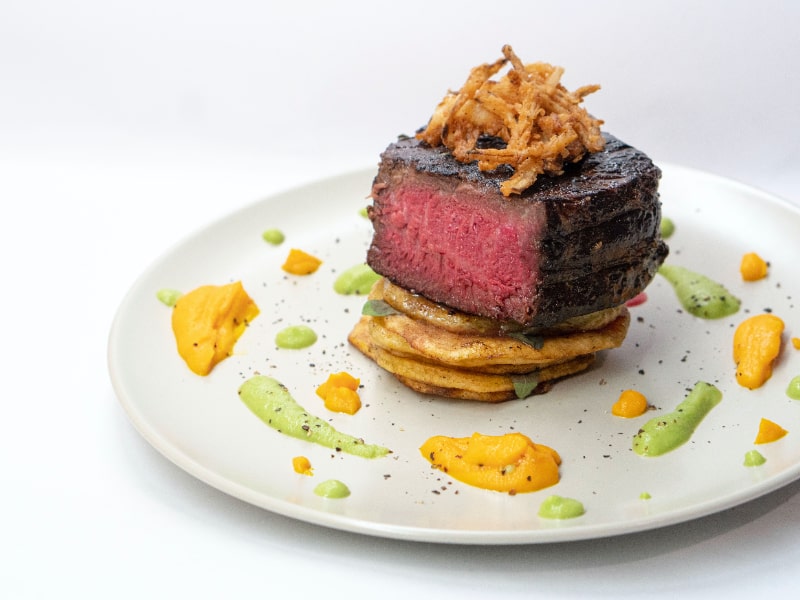From the looks of it, grilling steak seems pretty straightforward, right? It’s not any different from cooking, say, chicken breast. Except that it very much is. You see, there are different steak cooking levels, and each requires some degree of finesse and knowledge to nail right.
To help you cook better steaks, we decipher the specifications between well and medium-well, and the preferred temperatures for each doneness, amongst other important aspects.
Explaining Steak Cooking Levels: How Do They Look Like And What Do They Mean?
Rare
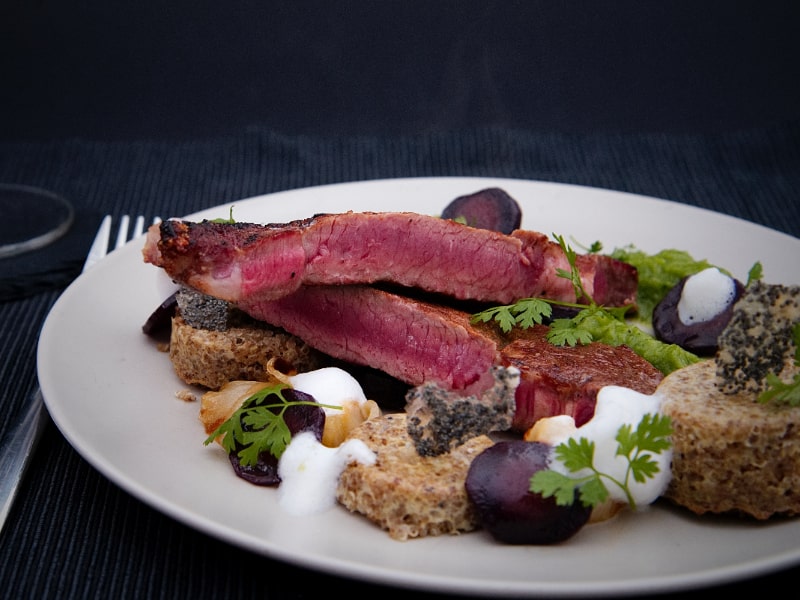
This is rarely (pun very much intended) requested at steakhouses because it’s close to eating raw beef, if not for a slightly charred outside. Rare steaks have a warm but visible red centre, which is encased by light brown sides. It should be soft and tender to touch, much like fresh meat.
Try using lean cuts with a minimal fat content like sirloins and tenderloins as they tend to brown quicker on the pan. Don’t forget to remove excess moisture with kitchen towels, which will almost guarantee a crusty sear. Rare steaks are prone to overcooking, so be sure to use an instant-read thermometer to close monitoring.
Colour: Red in the middle with charred outsides.
Texture: Soft, slightly chewy.
Cooking time: Five minutes on each side for one-inch steak.
Ideal internal temperature: 48 to 52 degrees Celsius.
Medium-Rare
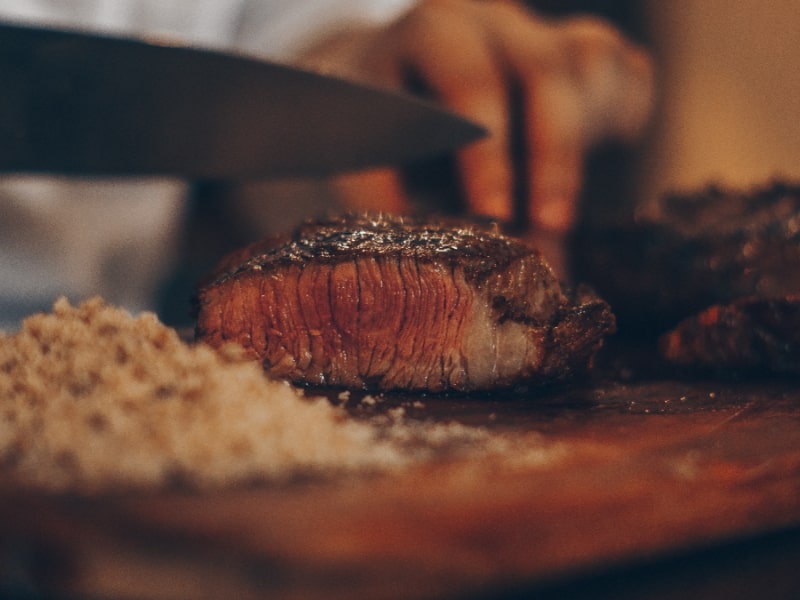
The golden standard of steak cooking levels and also the most widely accepted, you can’t go wrong with medium-rare. The centre is slightly cooked through without losing moisture or flavour, which results in a melt-in-your-mouth and buttery sensation in every bite.
Leaner cuts are recommended to achieve this steak doneness. These include a striploin or hanger steak. If you opt for a one-inch steak, it should take about seven minutes of cooking time on each side. We recommend using a cast iron because it evens out heat quickly, allowing the meat to brown and sear better. Lastly, don’t forget to let it rest for eight to 10 minutes. Not doing this almost guarantees a dry steak. You don’t want that.
Colour: Pink in the centre with hints of red. The sides and outside are caramelised to a light brown shade.
Texture: Soft but more fibrous compared to rare.
Cooking time: Seven minutes on each side for a one-inch steak.
Ideal internal temperature: 54 degrees Celsius.
Medium
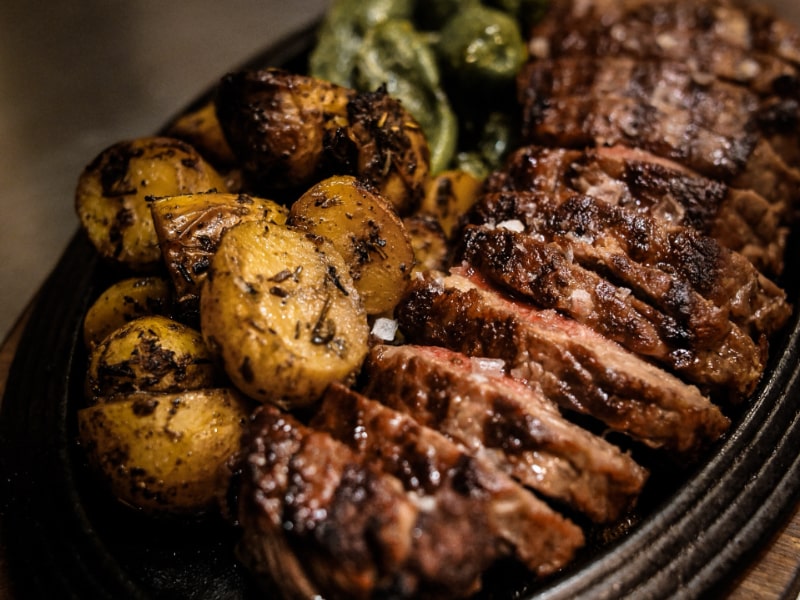
Across steak cooking levels, many get confused between medium and medium-rare steak doneness. So how do you tell them apart? Just examine the middle. Medium-rare steaks have more pink than browned meat. Medium steaks are on the reverse; more brown than pink. The mouthfeel is distinguishable between the two as well, with medium steak having more of a robust bite to it.
Since you’ll be cooking at higher temperatures to reach medium doneness, it’s recommended to use rib-eye or filet mignon steak because they have a higher fat content. Which results in a flavourful finish that isn’t too dry.
Colour: Pink but with more brown in the middle.
Texture: Firm to the touch and less tender.
Cooking time: 10 minutes on each side for a one-inch steak.
Ideal internal temperature: 60 degrees Celsius.
Medium-Well

Prefer your steak cooked through with just a hint of pink? Then the medium-well doneness will suit your appetite. It’s got good charring on the top and bottom as well as a decadent inside to compensate for the obvious lack of moisture.
Steaks that hold up well at this level of doneness include Wagyu and rib-eye. Both are known to have ample marbling, meaning there’s enough unsaturated fat to pull off a medium-well finish that isn’t too tough to eat.
Colour: Hints of pink with brown all over.
Texture: Springy and firm.
Cooking time: 12 minutes on each side for a one-inch steak.
Ideal internal temperature: 65 degrees Celsius.
Well-Done
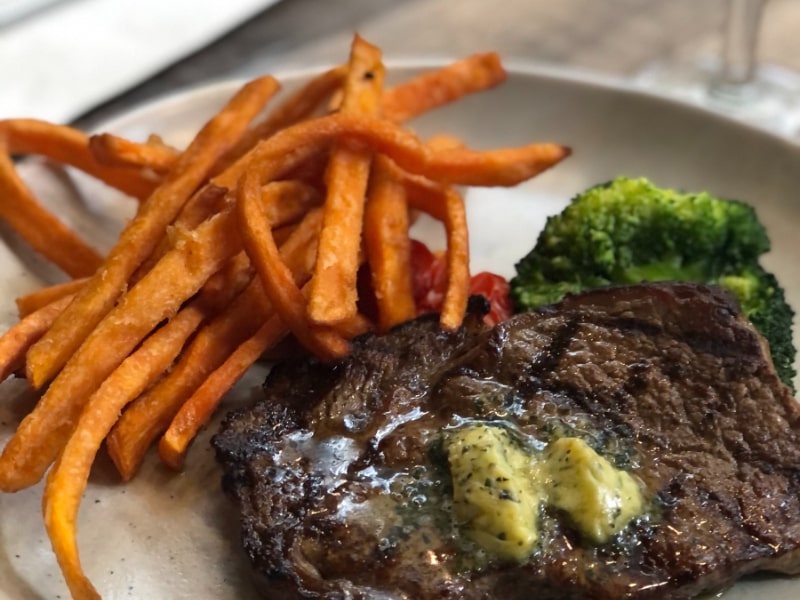
Out of all steak cooking levels, this one is certainly the most polarising. Steak snobs call it inedible and chefs will almost definitely judge you for having your steak this way. But as with all things food, preference dictates and it’s not wrong to enjoy a well-done steak.
When making a well-done steak, the cut is the key. You’ll need one that has very high-fat content, so a rib-eye, T-bone, or skirt steak will be just nice. Although it’s a well-done steak you’re making, temperature control is just as important. You want something that still tastes like steak, not beef jerky.
Colour: Brown throughout.
Texture: Chewy.
Cooking time: 15 minutes on each side for a one-inch steak.
Ideal internal temperature: 71 degrees Celsius.
How Should You Season Your Steak?
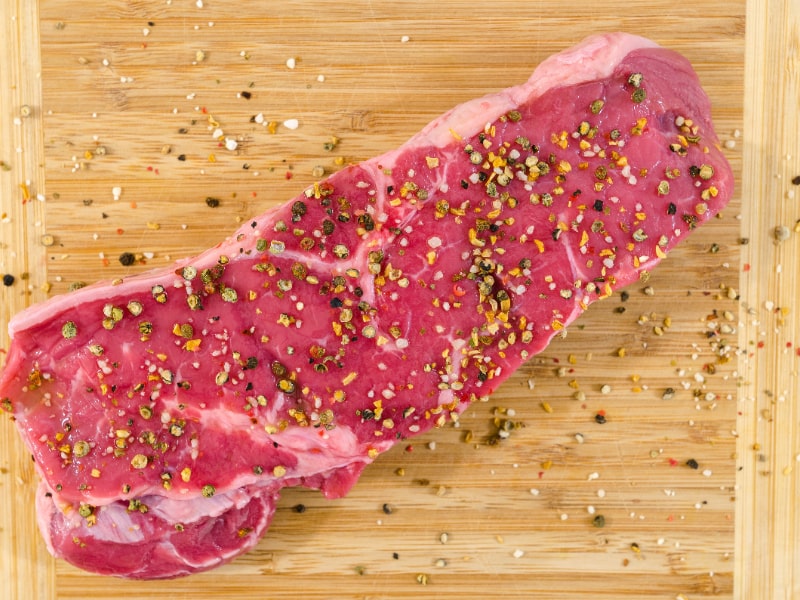
Understanding steak cooking levels is only half the equation. To truly create a soulful plate of succulent steak, you need to season it properly and generously. For starters, you can’t go wrong with the dynamic duo of essential steak prep: salt and pepper.
Not just ordinary salt, though. Try using Kosher salt because its crystal size allows for prime absorption into the outer layer of the steak. Adding to that is freshly ground black pepper for flavour and aroma. To amp up the seasoning, you can drizzle it with chopped herbs and spices like rosemary or bay leaves.
You can spice your steak about an hour before cooking so there’s enough time for it to soak in the seasoning. For a more convenient approach, use a sous vide machine to prep a few days beforehand.
To recreate a fine dining-like steak, baste it with a mixture of melted butter, fresh thyme, and garlic during the final moments of cooking. This simple move gives it a smooth and creamy flavour, no matter the steak doneness.
Related: Sous Vide Cooking: How It Works & The Best Foods For This Technique
Overview Of Steak Cooking Levels
| Steak Level | Colour | Texture | Cooking Time (one-inch steak) | Ideal Internal Temperature |
| Rare | Red | Soft | 5 minutes each side | 48°C – 52°C |
| Medium-Rare | Pink with hints of red | Soft but fibrous | 7 minutes each side | 54°C |
| Medium | Pink with a brown middle | Firm to touch | 10 minutes each side | 60°C |
| Medium-Well | Hints of pink with brown body | Springy and firm | 12 minutes each side | 65°C |
| Well-Done | Brown throughout | Chewy | 15 minutes each side | 71°C |
Now That You’ve Understood All Steak Cooking Levels, It’s Time For A Feast
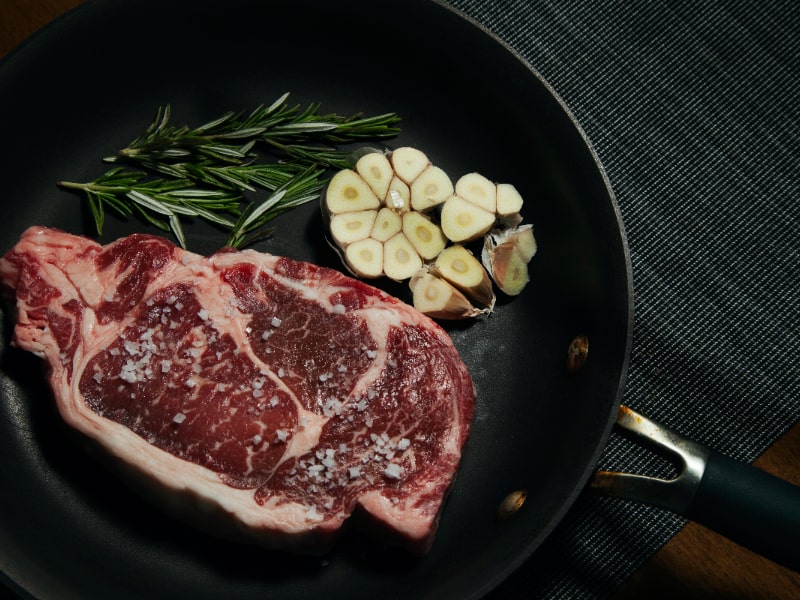
It might take a few tries to get your preferred steak doneness right, but with the correct ingredients, enough practice, and knowledge, you’ll be serving gorgeous slabs of meat in no time.
But a steak isn’t entirely complete without sides and what’s better than some crunchy waffle fries? Check out these easy French fries recipes that will surely be a hit at dinner parties, family gatherings, and every occasion in between.

